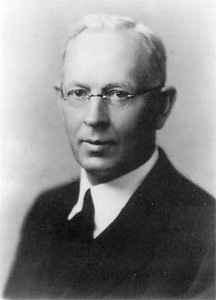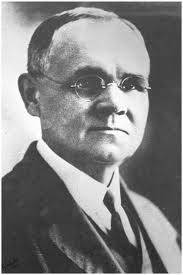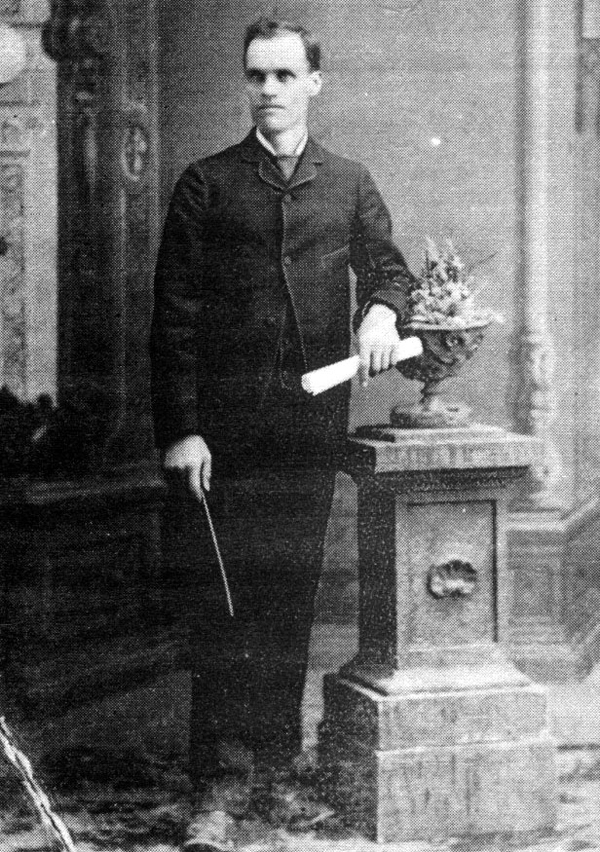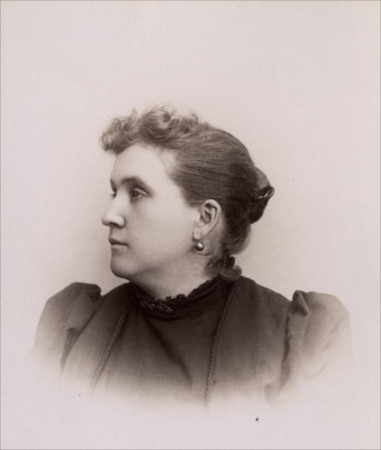Joseph Fielding Smith stood at the Tabernacle pulpit
In Salt Lake City on the second day of General Conference in April 1920. “One theme has stood out very prominently, and properly so,” he said. “That has been the subject of the great vision given to the Prophet Joseph Smith.”


Elder Smith had just listened to the scientist James Talmage, a fellow apostle who sometimes disagreed with Elder Smith’s views. “You know the story, I know,” Elder Talmage had said, “but it is well sometimes to be reminded of what we know.” He told the story of the first vision again and said that because of it The Church of Jesus Christ of Latter-day Saints “stands aloof and alone.” Elders Smith and Talmage agreed heartily that day.
That evening Latter-day Saints packed the tabernacle again
Filling every seat and some of the aisles. Evan Stephens, Welsh-born director of the Mormon Tabernacle Choir until 1916, returned to the rostrum after four years of feeling he had “been upon the shelf as a worn out vessel.” Now he was back in the conductor’s spot that had been his for a quarter century, leading the choir in his cantata, The Vision.

Church President Heber J. Grant thought the performance was a “regular triumph.” So did Samuel Mitton. He had first attended Conference as a teenager in October 1880, when Joseph Smith’s First Vision was canonized in the Pearl of Great Price. Samuel had loved the tabernacle organ and choir and listening to Orson Pratt relate the vision. Now in his mid-fifties, an admirer and friend of Evan Stephens, and director of the saints’ choir in Cache Valley to the north, Samuel noted in his journal each part that was sung, the sermon on “the vision of the Father and Son,” and the singer who played Joseph Smith. He summed up the experience as “the greatest music I ever heard.”
The April 1920 General Conference
Together with that month’s issues of the Improvement Era and Young Woman’s Journal, were just the beginning. The Mutual Improvement Association commemorated Joseph Smith’s first vision church-wide on May 1. Young saints in California performed music and gave speeches.
In Provo, Utah, students and faculty from the sixth grade through college shared testimonials. “Joseph Smith’s first prayer proves to me that there must be a Mother in Heaven,” said seventh-grader Inez Taylor, perhaps taking her cue from Susa Young Gates’s recent article, “for if there is a Father and Son, there must be a Mother.”

These statements are precious. For the first time in the historical record, young saints—some very young—described how the first vision resonated with them. Printed beside their professors’ comparatively didactic statements, the students’ told “what the first vision has done for me,” and “what the first vision means to me,” and “how the prophet’s vision has affected my life.”
Several students linked their identity to the First vision
None more cogently than Mildred Boyer, a student at Brigham Young University. She said the vision began the movement that led her future mother to migrate from Europe to America, where she married a man “whose parents pulled a handcart across the plains of America because of that same wonderful revelation. . . . Through the vision of that unlearned boy, who knelt in humble prayer before his Maker, I bear testimony that I am what I am. The glory of God has been engraved in my heart, and belief in the truths of His Gospel has caused me to rejoice, and to go ever onward and upward to a higher and nobler plane. I have learned to have faith in a living God who loves all men and is never known to desert them when in need. I have learned that it is better to walk with Him in the dark, that to attempt to find my way alone in the light.”
The youth in Provo made Joseph Smith’s first vision their own. They performed The Return of Truth Triumphant: A Pageant of the Restored Gospel, in which one of them acting as “the boy prophet” took center stage, while many others formed the chorus and supporting cast.
After five weeks of rehearsal in Logan
Samuel Mitton’s choir of 160 singers performed The Vision. “Oh how grateful I feel,” he noted in his journal, to have the privilege of singing this great composition of so great an event—and on the 100th anniversary of the time when the Vision was given to Joseph the prophet.”
Barring some miraculous intervention, I won't be making any beautiful music for the bicentennial. I sure feel akin, however, to the saints a century ago who were thrilled to testify one way or another of what it meant to them. Subscribe if you feel the same way, or if just want to learn more about the vision. Soon I'll start a series of bi-weekly posts that explore Joseph Smith's first vision from every angle.
Author: Steven Harper
I’m an introvert with an advocate personality. So I was pretty reserved in grad school seminars until a fellow student went off about how people shouldn’t have kids, and I launched into a lecture about how I’m the seventh of ten children of really great parents. My parents made sure the scriptures were read early and often in their home, but it was up to me to decide whether I would love the scriptures. I learned that the Book of Mormon is true shortly before I served in the Canada Winnipeg Mission. But It took me awhile to learn to love the scriptures. Not until I was teaching Dora, a Lutheran woman in her sixties, did I really want to know what they said and meant. That desire didn’t leave when I returned to BYU, so I changed my major from engineering to ancient near eastern studies and started a series of courses in Biblical Hebrew. I learned that the Bible was way more complicated than I had thought, and I doubted I could master the complexity. When I took a course on early Church history I decided I had to master that, so I switched my major and set my sights on a PhD in early American history. Along the way I wrote an MA thesis about who joined the Church in the 1830s and why. I wrote my dissertation on a little-known 1737 fraud by which the sons of William Penn evicted the Lenape Indians from their homeland. I started teaching in the history and religion departments at BYU-Hawaii, then in 2002 got the chance to join the Religious Education faculty at BYU in Provo and become an editor of The Joseph Smith Papers. That combo was enticement enough to leave Hawaii, where I thought I would miss the land but ended up missing the people. A decade later I taught the Bible (go figure) to great students at the BYU Jerusalem Center for Near Eastern Studies. Before that I had been serving on committees tasked by the Church Historian and Recorder with planning a new history of the Church. When I got home from Jerusalem I was invited to join the Church History Department in Salt Lake City to be the managing historian of that project. For the next six years it was my humbling privilege to work with devoted and talented people to produce Saints: The Story of the Church of Jesus Christ in the Latter Days. More than one million people are reading it online and more than 400,000 print copies have been sold. In 2018 I got my other dream job back: professor of Church history and doctrine at BYU. I was also named the editor of BYU Studies, where I had formative experience as a student intern a long time ago. The best thing about me is my wife and children, but they forbade me to say much about them here. Hannah Salvesen is my daughter, and I’ll share lots of links to the great stuff she produces. Thanks to Hannah and Scott Salvesen for building this site and advising me patiently about all things related to the world wide web. View all posts by Steven Harper

A wonderful article. I look forward to more.
Thanks Dr. Harper! Your post here has inspired me to spend a moment to write what Joseph Smith’s vision has meant to me personally. I am always happy to read/listen to your words and even more pleased to read your bio and learn that you have had such a enjoyable career. I am always wishing you the best. – Whitney (Landon) Davis from BYU Jerusalem Fall ’11
Samuel Baley Mitton is my Great Great Grandfather. We knew that he and Evan Stephens had a close relationship as great friends. My wife are currently serving a Senior Couple Mission in the Czech/Slovak Mission. It was wonderful to read this article! Thanks so much.
Kind Regards,
Elder and Sister Arnold Robert Dransfield
Ps: my mother is AnnaLee Mitton
Thank you Steve. Very interesting.
Loved this peek into our history 100 years ago. I especially loved reading Mildred Boyer’s testimony and found her words resonating in my heart. I feel the same. Thanks for sharing this and thanks for all the good you share, Steve.
An excellent and beautifully written post. I look forward to more like it.
These are wonderful vignettes Dr. Harper. I love learning at your feet.
Greetings from Lehigh!
– Samuel